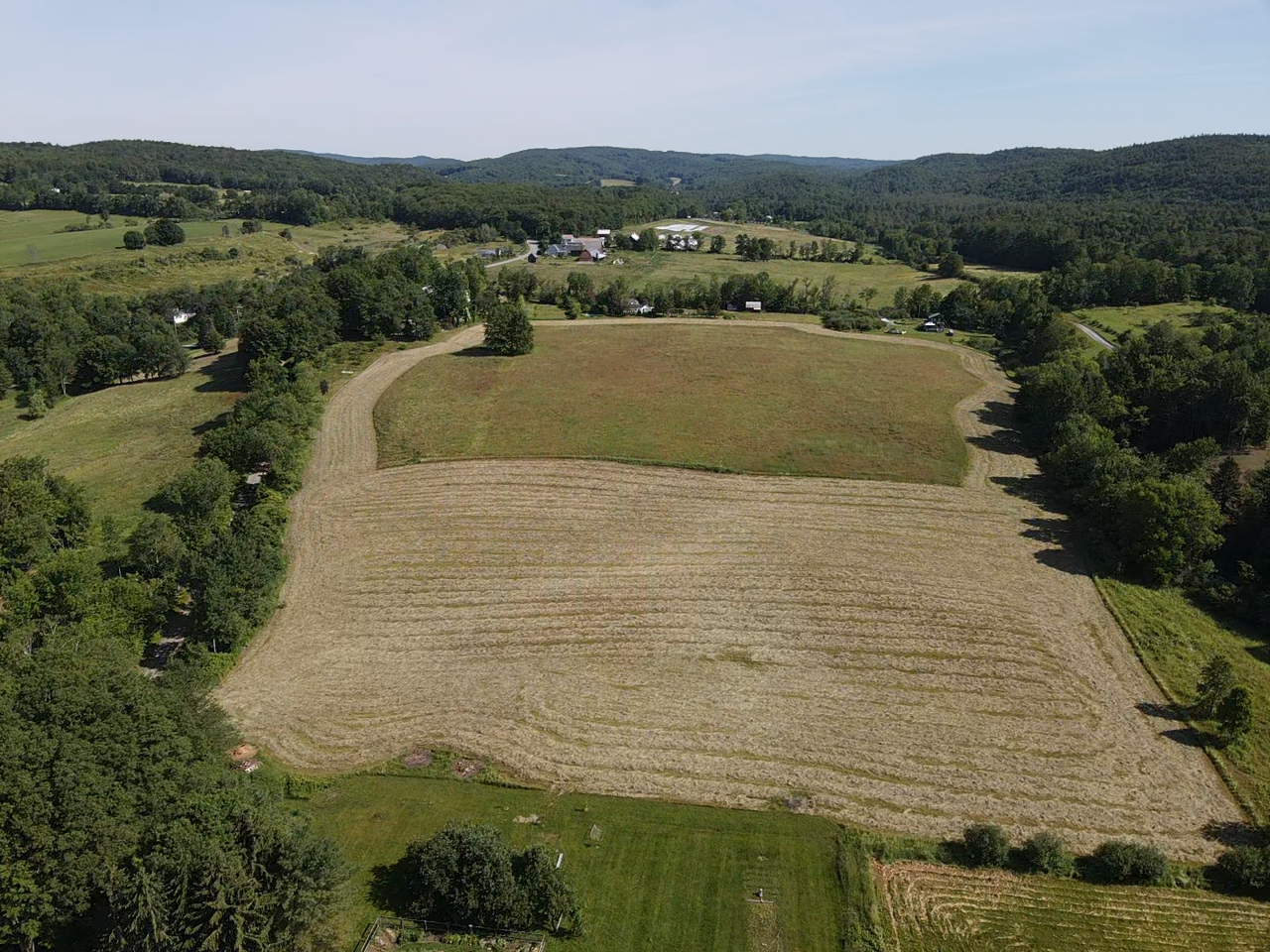In my November 3, 2021 posting titled South Meadow Restoration, I wrote about the work we started in 2013 on the five acre meadow we purchased the previous year, a meadow that had been largely abandoned before we bought it and is adjacent to our 2 ½ acre meadow we have hayed each year. That neglect over many years resulted in the rapid spread of Buckthorn, Rosa multiflora and a whole host of other invasives. We began reclaiming the meadow by brushhogging the drier, upper 3 ½ acres in late October after the wildflowers have dropped their seeds and have continued that annual brushhogging since.
In October, 2021 Mary and I created a list of native wildflowers growing naturally in that upper 3 ½ acres:
Taraxacum officinalis (Dandelion)
Solidago rugosa (Roughstemmed Goldenrod)
Tragopogon dubious (Western Salsify)
Hieracum pratense (Yellow Hawkweed)
Aster pilosus (White Heath Aster)
Achillea millifolium (Common Yarrow)
Asclepias syriac (Common Milkweed)
Daucus carota (Wild Carrot)
Trifolium pratense (Red Clover)
Vicia sativa (Common Vetch)
Plantago major (Broadleaf Plantain)
Plantago lanceolata (Buckhorn plantain)
Ranunculus bulbosus (Bulbous Buttercup)
Potentilla simplex (Oldfield Cinquefoil)
Setaria glauca (Yellow Foxtail)
Verbena hale (Blue Vervain)
Cyperus ssculetus (Yellow Nutsedge)
Rubus (Blackberry)
Galium mollugo (Smooth Bedstraw)
Aster vimineus (Small-flowered White Aster)
Aster laterifolius (Calico Aster)
Eupatorium maculatum (Joe Pye Weed)
Brush-hogging keeps woody invasives such as Buckthorn and Rosa multiflora under control. And when we have time, we go into that area with shovel in hand to uproot woody invasives.
As to the lower 1 ½ acres: This area runs north-south, in the center of which runs a seasonal stream fed by three smaller streams that drain an east facing hillside and woodland, the resulting water running through three culverts under a town road and forming a single stream on our land. That 3’ or so wide, 18” deep stream flows into our neighbor’s four acres of bog. The wettest and lowest portion is commanded by dense Canary Reed Grass that was planted decades ago by 19th and 20th century farmers who used the grass for bedding for their cows. (We have not decided how to address this dense grass.)
To address this lower acre and a half or so of wetland, we have teamed up with Jennifer Garret of The Vermont Land Trust (who oversees our twenty acres of meadow) as well as Cory Ross of The Windham County Conservation District in Brattleboro.
The goal for this acre and a half with small stream running through it is to create bird and wildlife habitat. In May, 2022, Cory Ross laid out the planting spots for 460 very young plants.
He then worked with Jennifer Garret and others from The Vermont Land Trust to organize around 35 volunteers to plant the following:
Wet or dry soil:
25 Basswood
30 Arrowwood
50 Black Elderberry
Upland:
20 White Pine
10 Paper Birch
Wet soil:
60 Speckled Alder
60 Silky Dogwood
40 Red Osier Dogwood
60 Nannyberry
65 Black Willow
Under shade of existing mature trees:
40 Witch Hazel
We were able to complete the planting when around twelve students from the River Valley Tech Center in Springfield, Vermont, along with their teacher, John Harmer, volunteered to help. They also uprooted many woody invasives as they went. They deserve the bulk of the credit for doing the hard work.
Ross and others will return to the site once a year to check on the progress of the plants and uproot what woody invasives they find– especially Buckthorn and Multiflora Rose. Mary and I will also be checking for and removing woody invasives we see. It will take vigilance.
OUR 10 ACRE HAY MEADOW AND BIRDS
Bob O’ Links and Red-Winged Blackbirds
Since the summer of 1984, we have had our ten acres of meadow – our part of a thirty-five acre hayfield across the road from the 5 acre field I wrote about above– mown by local farmers. Starting around 1990, The Bazin Farm guys have mown the field twice, first in mid June and then in August. Around 2000, when it became apparent that Bob-o-Links (and Red-Winged Blackbirds in fewer numbers) were nesting in the field, we held off the initial mowing until July 4. Over the last few years we extended the mowing until July 15 following the recommendations of the Bob-O-Link Foundation.
Photo: Soren deNiord
As a result, the Bob-O-Link population has increased dramatically, with perhaps fifty pair nesting on the ground in the meadow, as they do.
One unintended consequence of this timing is that this later mowing allows Buttercups and other weeds to mature and drop their seeds before the later mowing occurs. Gradually the field has become more and more populated by what farmers regard as invasives. As dramatic and beautiful as is a 35 acre field of buttercups in bloom, the stems of this plant are less nutritious, less palatable to cows than the hay they are outcompeting. There are always tradeoffs.
